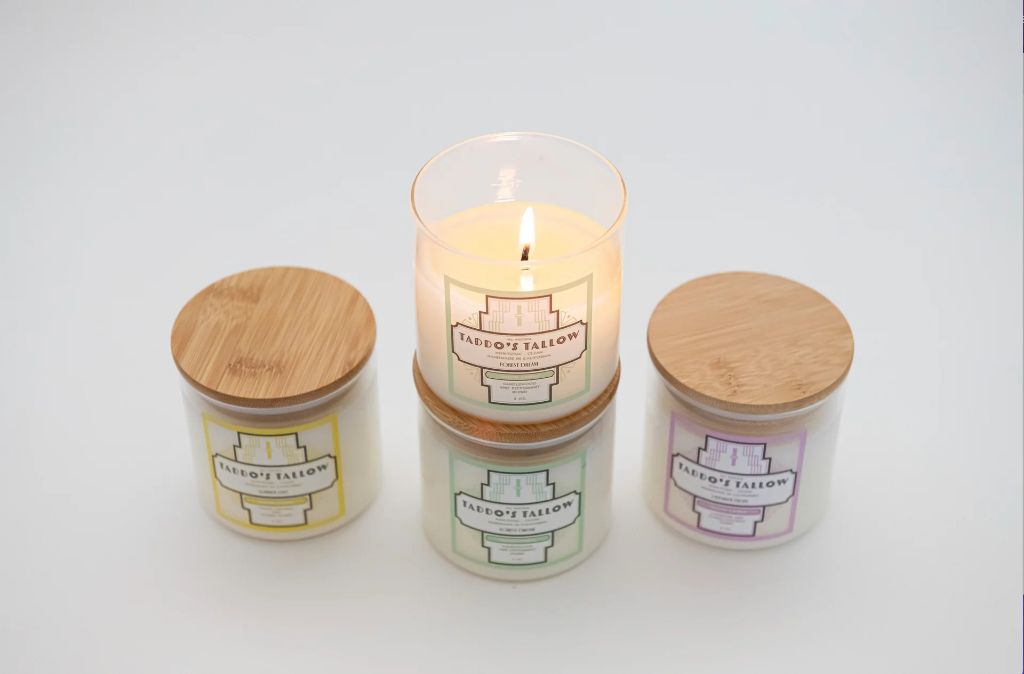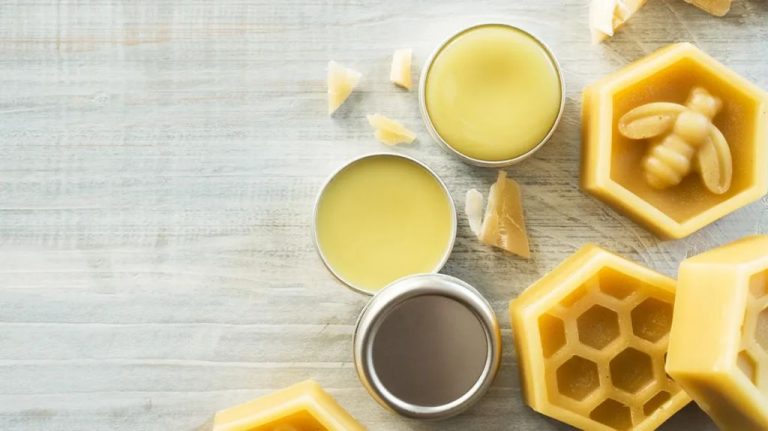What Was Old Candle Wax Made Of?
Candles have a long and storied history, stretching back thousands of years. Before the advent of electricity, candles served as one of the primary means of artificial lighting around the world. The earliest known candles originated in Ancient Egypt and China around 3,000 BCE. These early candles consisted of reeds or animal fats soaked in liquid fuels like olive oil or beeswax.
For centuries, candles remained an indispensable part of daily life. They allowed people to extend their productivity after sunset, providing light for everything from religious ceremonies to festive celebrations. The simple candle enabled humans to effectively double their waking hours. Candles were also vital for navigation and exploring caves and other dark spaces.
Over the millennia, candlemaking evolved across cultures. Different regions developed their own styles of candle, based on available materials. Despite the diversity of fuels and wicks, all candles serve the same timeless purpose of pushing back the darkness.
Early Candle Materials
The earliest candles used in ancient times were made from rendered animal fat called tallow. Tallow candles were made by the ancient Egyptians and Romans from animal fats such as beef or mutton fat (Smith College Museum of Ancient Inventions). They would soak the tallow or other fats in order to extract the grease, and then use the extracted grease to produce the candles. Tallow remained the most common candle material for many centuries given how inexpensive and widely available animal fats were.
Another material used for early candlemaking was beeswax. Beeswax candles were common in ancient Rome and Greece, and were made by melting beeswax from beehives and pouring or dipping the wax to form the candle shape. Beeswax was considered a more high quality material than animal fats, producing candles that burned brighter and cleaner (History). However, beeswax was more labor intensive to produce and therefore more expensive. Plant oils were also occasionally used for candlemaking in ancient times, though less common than animal fats and beeswax.
Animal Fats
Before more modern materials like paraffin wax became widely available, animal fats were commonly used to make candles. Tallow, which is derived from beef or mutton fat, was one of the most common animal fats used for candle making historically.

According to this source, tallow candles burn slowly and evenly, producing minimal smoke. Tallow was abundant and inexpensive, making it an accessible candle-making ingredient. Some artisans today still use tallow in their handmade candles for the unique properties it provides.
Other animal fats like whale fat and deer fat were also sometimes used for candle-making before the advent of paraffin wax. Whale fat in particular was prized for candles because it was odorless and burned cleanly. Deer fat, also known as deer tallow, produced a smoother and brighter flame than cattle tallow according to some accounts. However, these animal fats were less widely available than beef and mutton tallow.
Beeswax
Beeswax was a major improvement for candlemaking that was introduced in Europe during the Middle Ages https://candles.org/history/. Beeswax is made by honey bees and formed into honeycomb. It was more expensive than animal-based tallow, but had benefits of burning cleanly and brightly, with less smoke and odor https://beezerowaste.com/pages/lighting-the-way-the-fascinating-history-and-origins-of-beeswax-candles. Ancient civilizations like Egypt used beeswax not just for candlemaking but for purposes like nail polish and embalming their dead.
Plant Oils
Plant oils have historically been used in candle making to create fuels that burned cleanly and provided light and fragrance. Three major plant oils used were olive oil, palm oil, and bayberry wax.
Olive oil was one of the earliest and most widely used plant oils for candles. The ancient Romans, Greeks, Egyptians, and Phoenicians all made olive oil lamps to light their homes and temples. Olive oil burns slowly and cleanly without producing much smoke, making it an ideal candle fuel.1
Palm oil was another important candle fuel, especially in regions where olive trees couldn’t grow. Native to tropical areas of Africa, palm oil became a major export once European traders discovered its utility for candle making. Like olive oil, palm oil burns slowly and produces a bright, steady flame.2
Bayberry wax is extracted from the fruits of bayberry shrubs and was a popular candle fuel in North America before the introduction of beeswax and tallow. Bayberry wax has a distinctive aromatic, spicy fragrance when burning, making it a favorite for both lighting and scenting colonial homes.1
Candle Wicks
The material used for the wick is an important factor in candle making. The wick transports wax to the flame and impacts how the candle burns. Early candle wicks were made from various natural materials including cotton, flax, and hemp fibers.1
Cotton has been one of the most common wick materials for centuries. Cotton wicks are inexpensive and work well for many candle types. They burn evenly and curl as they burn to form a mushroom shape. This prevents the flame from drowning in melted wax. Cotton wicks are popular for container candles, pillars, votives, and other applications.
Flax was historically used for candle wicks before the availability of cotton. Flax fibers come from the stalk of the flax plant. They have good capillary action to bring fuel to the flame. However, flax wicks tend to smoke more than cotton. They may also mushroom less evenly. While less common today, flax wicks are still used by some artisanal candle makers.
Hemp wicks were also used in early candle making. Hemp fibers are derived from the stalks of the hemp plant. Hemp wicks burn slowly and evenly. However, they can be more prone to smoking compared to cotton. Hemp wicks continue to have niche applications in candle making today.
Candle Production
Since the earliest days of candlemaking, there have been three main methods of producing candles:
Dipping
The dipping method is the oldest and most traditional way of making candles. It involves repeatedly dipping a wick into melted wax or tallow to build up layers until the desired thickness is achieved. This labor-intensive process was used for candles made from animal fats like beef tallow or sheep fat. The dipping method allows candles to be made one at a time in a range of sizes. According to the Smith College Museum of Ancient Inventions, dipping was the sole method of candlemaking until the 15th century[1].
Molding
Candle molding emerged in Europe in the Middle Ages. Wax was poured into metal molds, allowing multiple candles to be produced at once in identical shapes and sizes. The earliest candle molds were made of pewter. Molding enabled mass production of candles at a lower cost. It also allowed more complex candle shapes and designs[2].
Extruding
In the 19th century, the extrusion method was invented. This automated the production of cylindrical candles. Wicks are fed through a tube while wax is forced through a die under pressure and cut at the desired length. Extruding enabled continuous production of large numbers of candles[3]. Today, most commercial candles are made using extrusion technology.
[1] https://www.smith.edu/hsc/museum/ancient_inventions/candles2.html
[2] https://en.wikipedia.org/wiki/History_of_candle_making
[3] https://candles.org/history/
Quality Considerations
The quality of candles historically was evaluated based on key factors like burn time, brightness, smoke, and odor.
Burn time was an important consideration as longer burn times allowed candles to provide light for more hours before needing to be replaced. Beeswax candles were prized for their exceptionally long burn times, while animal fat candles had shorter burn durations.
The brightness of the candle flame was also a mark of quality, with beeswax and whale fat candles glowing brighter than tallow candles. Brighter candles illuminated spaces better.
The amount of smoke produced affected candle quality. Beeswax candles burned cleanly with little smoke, while animal fat candles could produce more smoke that left residue on walls and ceilings over time. Less smoke was desirable.
Odor was another factor, as the smell of burning animal fats could be unpleasant in closed indoor spaces. Beeswax had a lightly honeyed aroma that was considered more pleasant. Early candlemakers worked to refine scents and minimize odors for better quality candles.
Regional Differences
The materials used to make candles often depended on what was locally available and cultural preferences. In North America, candlemakers relied heavily on animal fats like beef tallow or pig lard, as well as beeswax which was harvested from beekeeping operations.
In New England, bayberry plants were used to produce bayberry wax candles that became part of the region’s tradition. The leaves and fruit of these plants were boiled to extract the wax which was said to have a pleasant scent when burning. Bayberry candlemaking was unique to this region where the shrubs grew natively. According to the experiencegr.com article “Crafting Candles at Wax Poetic Candle Bar,” bayberry candlemaking was a common colonial craft in New England.
In Europe, animal fats were also commonly used for candles, but beeswax became especially popular for use in churches and by royalty who wanted higher quality candles. Whale oil was used for lamps more than candles. Plant oils like olive oil were burned in candles in the Mediterranean region where olive trees grew. In Asia, candles were historically made from wax derived from insects or plants like the tallow tree.
So while tallow and beeswax were common worldwide, the specific materials used often depended on what natural resources were abundant and what materials were culturally significant in a given region.
Conclusion
Early candles were made from materials such as animal fats, beeswax, plant oils, and plant fibers like reeds or rushes. Tallow from cows or sheep was a common source of animal fat for candles in Europe and North America. Beeswax candles were superior in quality but more expensive. Plant oils like olive oil and walnut oil were also used in places where they were readily available. The earliest simple wicks were plant materials that absorbed the melted wax. Later, more sophisticated braided cotton wicks were developed that burned more evenly and cleanly.
Understanding the history of candles helps us appreciate how they evolved over time as new materials and methods were discovered. What began as basic functional lighting using rushlights and animal fats developed into an artisanal craft that produced wax candles of increasing complexity and quality. The rich tradition of candlemaking has endured for centuries and candles remain an important part of rituals, ceremonies, and ambiance today. Though electricity has made candles obsolete for routine lighting, knowledge of how they were made historically provides insight into the ingenuity of our ancestors.





